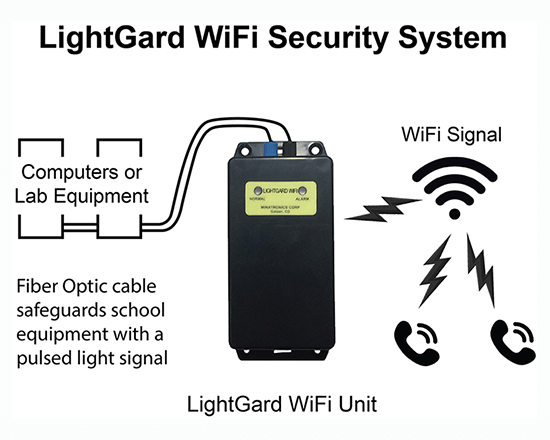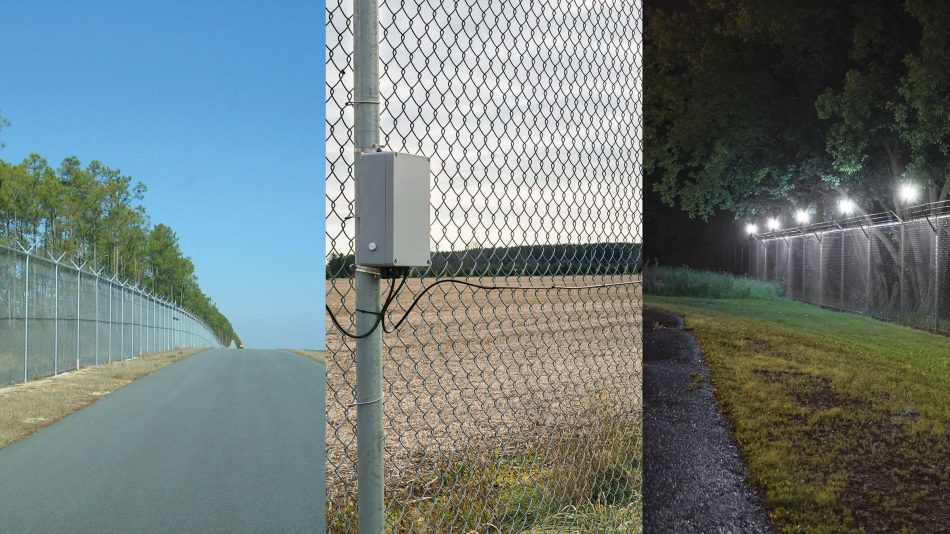Boost Your Safety With Advanced Fiber Optic Security Solutions
In an era where security is critical, advanced fiber optic protection systems offer a compelling option for improving security throughout numerous environments. What effects do these advancements hold for future safety and security procedures?
Advantages of Fiber Optic Safety
Using the advantages of fiber optic modern technology considerably enhances safety systems across different applications. Among the primary advantages is the enhanced data transfer capability, enabling for the transmission of big amounts of data at broadband. This is especially critical for real-time video clip surveillance, where high-resolution feeds can be sent without latency, ensuring immediate reaction capabilities.
Furthermore, optical fiber show remarkable resistance to electro-magnetic disturbance, which is crucial in settings with possible signal interruptions. This reliability makes sure consistent efficiency in essential safety and security operations. Fiber optic cable televisions are much less vulnerable to tapping and unapproved accessibility compared to standard copper wiring, thus enhancing information integrity and discretion.
One more remarkable advantage is the longevity of fiber optic systems; they are more resistant to environmental aspects such as dampness, temperature variations, and corrosive materials. This resilience translates to reduce upkeep expenses and longer life expectancies for protection installations.
Finally, the lightweight nature of fiber optic cords helps with simpler installation and transmitting, especially in complicated facilities (fiber optic security system). Ultimately, the combination of fiber optic innovation into safety systems not just strengthens defense steps but also maximizes functional effectiveness
Secret Features to Take Into Consideration
When reviewing fiber optic safety and security systems, a number of crucial features must be considered to ensure optimum performance and efficiency. Initially, examine the system's detection array and level of sensitivity; a substantial range enables for keeping an eye on huge locations, while high sensitivity guarantees that also minor disturbances are found immediately.
Following, take into consideration the assimilation capacities of the system. A fiber optic security system need to perfectly user interface with existing safety and security steps such as cameras and alarm systems, producing a natural protection network.
Sturdiness and ecological resistance are likewise essential attributes. Ensure that the system is developed to endure extreme climate condition and possible physical hazards, as this will extend its functional lifespan.

Last but not least, check into the scalability of the system. A durable fiber optic safety system need to be easily expandable to fit future requirements without significant overhauls. By very carefully taking into consideration these attributes, you can select a fiber optic protection solution that boosts safety and safety and security in your setting.
Installment Process Overview
To effectively implement a fiber optic safety and security system, an organized setup process is crucial. This process begins with a detailed website assessment to figure out the details security demands and to determine ideal locations for fiber optic wires and protection gadgets. Following this evaluation, the installment team will certainly develop a thorough plan, including cord pathways, essential tools, and conformity with regional regulations.
Next, the setup involves laying the fiber optic cords, ensuring they are secured from environmental aspects and physical damages. Proper handling methods are critical, as fiber optic cables are sensitive and can be conveniently damaged. After the cabling is installed, adapters and discontinuations are thoroughly finished to guarantee signal integrity.
The subsequent phase includes mounting helpful resources protection gadgets such as video cameras, motion detectors, and alarm systems, all integrated with the fiber optic network. Rigorous testing is conducted to validate that all components are operating properly and to make sure optimal performance.

Contrasting Fiber Optic to Standard Solutions
The development of safety modern technology has actually brought about significant innovations in the comparison in between fiber optic systems and standard copper-based systems. Fiber optic systems make use of light to transmit data, providing superior data transfer and speed contrasted to their copper counterparts. This leads to improved data transmission capacities, making fiber optics perfect for high-resolution video monitoring and real-time monitoring.
In addition, fiber optic cable televisions are immune to electro-magnetic interference, decreasing the probability of signal deterioration brought on by exterior factors. This particular ensures regular efficiency, even in challenging atmospheres. In contrast, conventional copper systems are extra susceptible to interference, resulting in possible great post to read vulnerabilities in protection applications.
Toughness is one more advantage of fiber optic systems. They are less prone to harm from environmental factors such as wetness and temperature level changes, which can endanger copper electrical wiring. Fiber optics are lighter and thinner, allowing for less complicated setup and reduced physical impact.
Nevertheless, conventional systems tend to have lower first costs, making them attractive for budget-conscious tasks. While fiber optic systems may require a higher in advance investment, their long-lasting advantages-- such as reduced upkeep costs and better integrity-- commonly outweigh the preliminary expense, positioning them as a superior selection for contemporary safety and security demands.
Future Patterns in Safety And Security Innovation
Emerging trends in protection technology are positioned to transform the landscape of monitoring and danger discovery - fiber optic security system. As companies progressively deal with innovative risks, advancements such as expert system (AI) and artificial intelligence (ML) are ending up being essential to protection systems. These technologies boost the ability of fiber optic systems by allowing real-time data analysis, determining anomalies, and automating responses to possible violations
Furthermore, the assimilation of the Internet of Points (IoT) is revolutionizing protection structures. IoT tools can supply extensive situational recognition and help with seamless interaction in between various protection parts. This interconnectedness permits more efficient surveillance and faster case feedback times.
Biometric authentication is also gaining momentum, giving a higher level of security via click here now one-of-a-kind physical characteristics. As this modern technology develops, it is likely to be incorporated into fiber optic systems for improved access control.
Verdict
In final thought, advanced fiber optic safety systems stand for a considerable improvement in safety and security and security technology. The change from standard systems to fiber optic remedies shows a growing trend in the direction of much more efficient and effective protection actions in a progressively complicated technological landscape.